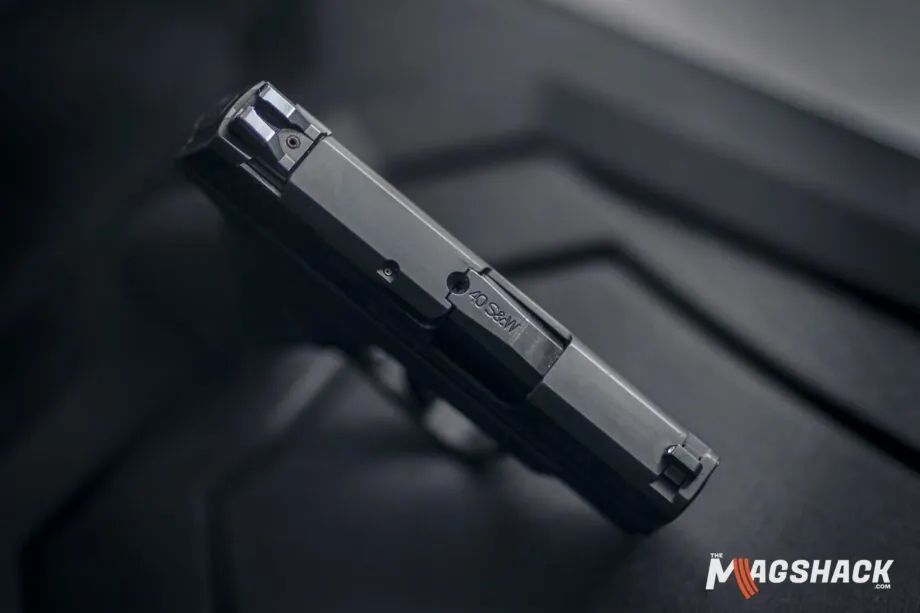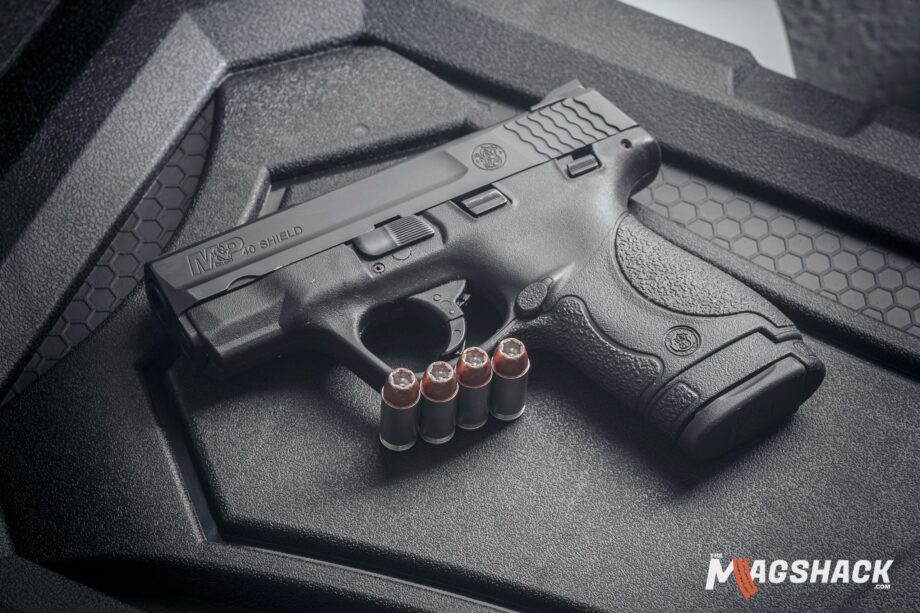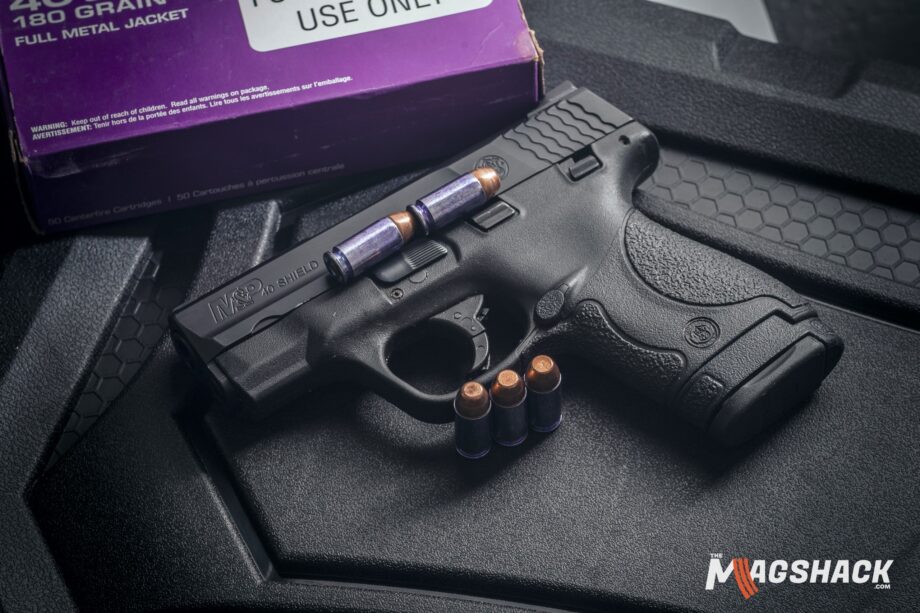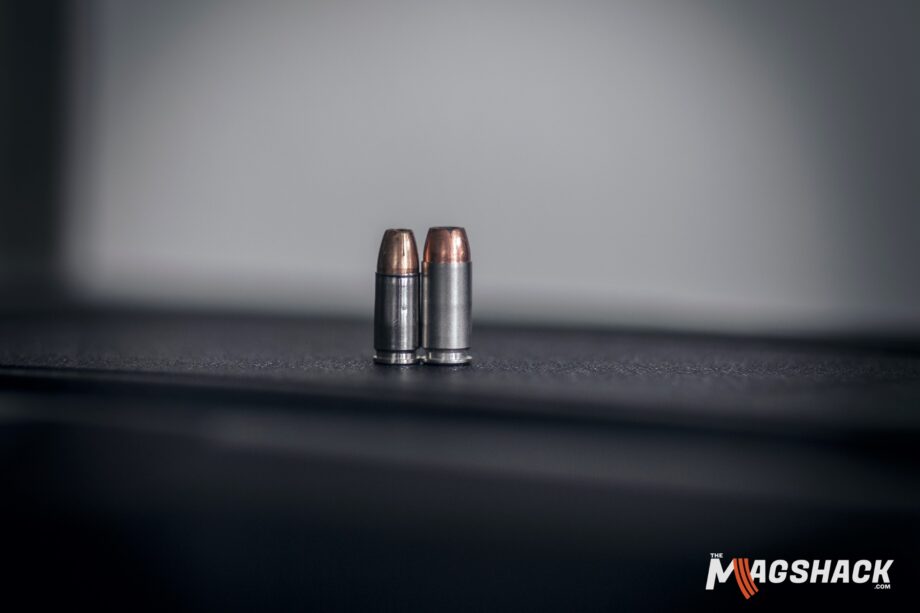Is .40 S&W Dead?
Oh .40 S&W. If you really want to start a fight in the Second Amendment Internet Universe, just post “.40 Smith & Wesson”, step back, and watch the threads burn. With even more fervor than the classic 9mm vs .45 ACP battle, .40 S&W alone will start a war of words for the ages.
To frame the debate, for a while, the .40 S&W cartridge was the “go-to” for law enforcement at all levels here in the US, and even in some other nations. This made sense – the round was developed to satisfy a law enforcement requirement, specifically one from the Federal Bureau of Investigation, aka the FBI.

Generally, where US law enforcement goes gun-wise, the American armed citizens follow. Those who were serious about defensive gun usage, along with a fair bit of status-seekers, would consistently brag about the .40 S&W pistol on their hip. Be it a GLOCK 22, or a SIG Sauer P226 (available in .40 S&W) to get those Fed vibes going, the comparatively new .40 S&W was a status symbol, to say the least.
However, as time went on, professional users started dropping the .40 S&W round. Advances in 9mm projectile design and a wider variety of officers being issued firearms for their duties meant that the snappy and hot .40 S&W may have been seeing its last days. But is .40 S&W dead?
The History Of .40 Smith & Wesson
To know where .40 S&W stands today, it is a good idea to know its history and what spurred its development.
Compared to both the 9mm and .45 ACP cartridges, the .40 S&W is a youngster, being developed in the late 1980s and making its debut at the January 1990 SHOT Show along with the Smith & Wesson 4006 semi-automatic pistol.
The impetus for its development was the infamous April 11, 1986 FBI Miami shootout. The 1980s were a crazy time for law enforcement. Gangs, Cocaine Cowboys, and organized crime were running rampant. In many ways, things came to a head during this shootout, often described as a “turning point” for American law enforcement.
On that day, a group of FBI agents from the Miami field office attempted to apprehend two armed robbers in what was expected to be a somewhat routine stakeout/apprehension operation. Unfortunately, the suspects were armed with a Ruger Mini-14 and a .357 Magnum revolver, outclassing the FBI agents, who were only armed with shotguns, some .38 Special revolvers, and S&W 9mm pistols.
In the ensuing battle, many shots were exchanged, with the suspects soaking up solid hits from the FBI’s weapons and still managing to kill two agents before succumbing to their injuries.
The general post-mortem conclusion was that the ballistics of the .38 Special +P rounds, and the 9mm rounds issued to the agents were suboptimal at longer ranges. Advances in 9mm projectile design had yet to occur, so the FBI was forced to admit a need for a more powerful cartridge.
Initially, the agency requested and started issuing Smith & Wesson Model 1076 pistols chambered in 10mm. In its stock configuration, the 10mm round’s sharp recoil proved to be too much for most agents to control effectively, so the agency had ammo manufacturers produce a special “downloaded” (i.e. less powder in the casing) 10mm cartridge, usually termed as 10mm FBI. Since downloading a cartridge can cause problems due to increased airspace, Smith & Wesson took the next step of “cutting down” the 10mm to decrease its case volume, ultimately resulting in the .40 Smith & Wesson.
While the 10mm was brutally effective in the hands of those who could manage it, the .40 S&W proved to be a winner with the FBI as a whole. A key advantage was that the shorter overall length of the cartridge meant it could be adapted easily to existing 9mm pistol frames, enabling Smith & Wesson to take existing 9mm pistols and quickly reconfiguring them to accept .40 S&W.

Speer Gold Dot 185gr .40 S&W hollow point ammunition.
Winchester 180gr .40 S&W full metal jacket ammunition. This ammo is tinted purple since a certain federal agency had problems discerning between training and duty ammo…
Ironically, due to production vagaries and logistics, GLOCK had the first .40 Smith & Wesson pistol for sale in the US, the GLOCK 22. Gaston Glock managed to get a pistol chambered in a Smith & Wesson-designed round out the door and into the customer’s hands before Smith & Wesson did. Ironic.
Regardless, the cartridge itself proved to be a smashing success. With more stopping power than .38 Special or 9mm, .40 S&W ammunition and firearms were picked up rapidly by law enforcement agencies across the nation. GLOCK even had a trade-in program where they would accept old GLOCK 17 pistols in 9mm, or any other pistol in 9mm, and give law enforcement agencies GLOCK 22 pistols in exchange at little to no cost. “Free” guns in a new and more powerful caliber certainly sweetened the deal.
In another irony, the federal assault weapons ban, signed in 1994 (and thankfully expired ten years later), limited new-production citizen firearm magazines to 10 rounds. Wanting more effective cartridges to compensate for the artificial limitations in capacity, citizen buyers picked up a major amount of .40 S&W pistols and ammunition as well. Compact pistols such as the GLOCK 23 proved popular, especially in states where shall-issue concealed carry was becoming a thing.
The 1990s and early 2000s proved to be the renaissance of .40 S&W. With agency adoption through the roof and a robust citizen market, the round worked its way into the culture of the Second Amendment community.
Popularity or not, the round itself did have a reputation for being a little hot and spicy. Smaller shooters complained of the “snap”, increasing the difficulty of follow-up shots. Extensive training remedies this, but outside of agencies operating on taxpayer funds, it is a financial commitment for most folk to train, and even more so with a “difficult” round.
With the sunset of the assault weapons ban in 2004, which permitted the legal sale of standard-capacity magazines to citizens again, along with advances in projectile design pushed 9mm back into the forefront. With a wider variety of users on tap, the industry shifted gears, ramping up production of “wonder nine” pistols. Coupled with newly-designed versions of 9mm hollow point ammunition, these pistols found their way into millions of citizen’s hands, along with a return to 9mm by most law enforcement agencies. The purported “death knell” of .40 S&W was when the FBI gave in and switched to 9mm back in 2015.
But does that mean .40 S&W is dead? Hardly.

Winchester 180gr .40 S&W full metal jacket ammunition. This ammo is tinted purple since a certain federal agency had problems discerning between training and duty ammo.
Where .40 Smith & Wesson Stands Today
As of 2023, most law enforcement users in the US have made the transition from .40 S&W back to 9mm. With budget-friendly trade-in options from manufacturers eager to snatch up another “dot gov” contract, as well as some departments offloading their .40 S&W pistols to FFLs for resale, the hop back to the “wonder nines” was a relatively easy one.
In essence, as an issued cartridge, the .40 S&W is pretty much withdrawn from service. However, that does not mean the cartridge in and of itself is dead. With plenty of infrastructure to produce both firearms and ammunition in the caliber, the .40 S&W still lives on in the hands of citizen users.
Some may ask, “Why, when 9mm is so prevalent and easy to become proficient at?”
Several reasons come to mind. Surprisingly, cost is one of them. With law enforcement sometimes choosing to offload their pistols to firearms distributors and gun shops, there are plenty of LE-issued .40 S&W pistols for sale, with guns such as the GLOCK 22 being picked up for under $300. In most cases, a police-issued pistol can be described as “gently used”, as most officers (despite the media misinformation) never shoot their firearm in an enforcement situation. The only usage really is the routine range session and qualification, with most officers shooting their issued handguns less than a thousand times per year. And for a quality pistol, maintained by a professional armorer over its life, a few thousand rounds down the pipe is nothing.
Ammo availability is another. Especially during the 2020 triple threat of COVID hysteria, summer riot season, and the federal elections, common calibers of ammunition became scarce. Suddenly .40 S&W experienced a resurgence, with enterprising citizens picking up discounted pistols and finding new and old stocks of ammunition in that caliber easy to find.
A third reason would be “support”. Many firearms trainers started their professional lives as law enforcement officers, and have experience with the caliber, and for them, passing down the knowledge is easy, especially when they are reunited with an “old friend”, i.e. .40 S&W.
A small note on law enforcement trade-in pistols, by the way. While most can be described as “gently used”, you may notice that they sport the usual signs of wear and tear, especially on the slide, from repeated holstering and unholstering. Also, since a certain amount of police officers aren’t “gun people”, the weapons may show some signs of neglect. It’s always advisable to thoroughly function-check a trade-in firearm, as much as you would any other weapon that is new to you.

9mm hollow-point ammunition (left) and .40 S&W ammunition (right).
.40 S&W Is A Viable Choice For Defensive Use
Again, despite the hype, .40 S&W remains with us, with new firearms chambered in the caliber making it into the market today. GLOCK recently released the Gen5 variant of their pioneering GLOCK 22, and of course, Smith & Wesson continues to produce plenty of pistols chambered in the caliber that bears the company name. New offerings in .40 S&W also come from Beretta, Heckler & Koch, Taurus, and even Hi-Point.
To be fair, the .40 S&W is a spicy little number (though not nearly as “hot” as its 10mm parent) and exhibits some marked recoil characteristics, but it’s nothing that any shooter with time and effort can train for and be proficient at.
Besides, as Second Amendment enthusiasts, we recognize that variety is the spice of life when it comes to firearms, and it always pays to have a few calibers on hand.
Want .40 S&W? We have you covered with some choice ammunition and magazine offerings here at The Mag Shack!